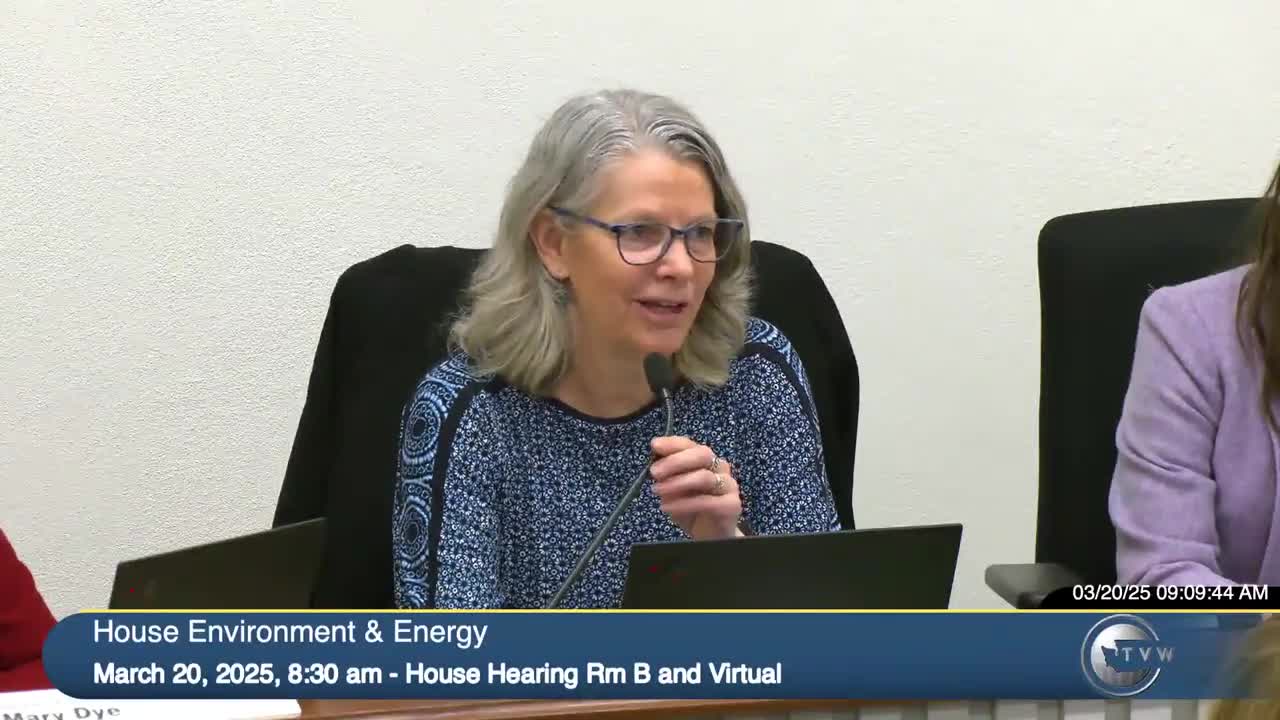Washington PUDs support Senate Bill 5445 to boost local clean energy projects
March 20, 2025 | Environment & Energy, House of Representatives, Legislative Sessions, Washington
This article was created by AI summarizing key points discussed. AI makes mistakes, so for full details and context, please refer to the video of the full meeting. Please report any errors so we can fix them. Report an error »

In a pivotal meeting of the House Environment & Energy Committee on March 20, 2025, Washington state lawmakers discussed Senate Bill 5445, aimed at enhancing grid reliability and promoting local clean energy projects. The bill, supported by various public utility districts (PUDs), seeks to address the anticipated surge in electricity demand while transitioning to a 100% clean energy grid.
Liz Anderson, Executive Director of the Washington PUD Association, highlighted the bill's potential to shift utility spending from purchasing renewable energy credits from out-of-state projects to investing in local initiatives. "This bill provides an alternative compliance option, providing an incentive for utilities to shift spending to local projects that support our local economy," Anderson stated, emphasizing the dual benefits of economic growth and environmental sustainability.
Sheila Korsen from Mason County PUD number 3 echoed this sentiment, detailing specific project opportunities that could arise from the bill. Korsen mentioned plans for expanding solar generation at their Shelton Operations Center and the potential for community solar projects aimed at low-income households. "The changes to the EIA would allow for reinvestment into our local communities... without increasing rates," she noted, addressing the financial pressures many residents face.
Ryan Collins, representing Snohomish PUD, underscored the bill's significance in creating incentives for clean energy capacity resources. He pointed out that the proposed amendments would help bridge gaps in the current regulatory framework, facilitating the expansion of clean energy projects in underserved communities.
The meeting also featured Joel Hansen from Ameresco, who shared the company's commitment to reducing carbon emissions through diverse clean energy solutions. Hansen's remarks reinforced the collaborative spirit among stakeholders, all working towards a common goal of a sustainable energy future.
As the committee deliberates on Senate Bill 5445, the discussions signal a strong push towards localizing energy production and enhancing grid reliability, setting the stage for a cleaner and more resilient energy landscape in Washington state.
Liz Anderson, Executive Director of the Washington PUD Association, highlighted the bill's potential to shift utility spending from purchasing renewable energy credits from out-of-state projects to investing in local initiatives. "This bill provides an alternative compliance option, providing an incentive for utilities to shift spending to local projects that support our local economy," Anderson stated, emphasizing the dual benefits of economic growth and environmental sustainability.
Sheila Korsen from Mason County PUD number 3 echoed this sentiment, detailing specific project opportunities that could arise from the bill. Korsen mentioned plans for expanding solar generation at their Shelton Operations Center and the potential for community solar projects aimed at low-income households. "The changes to the EIA would allow for reinvestment into our local communities... without increasing rates," she noted, addressing the financial pressures many residents face.
Ryan Collins, representing Snohomish PUD, underscored the bill's significance in creating incentives for clean energy capacity resources. He pointed out that the proposed amendments would help bridge gaps in the current regulatory framework, facilitating the expansion of clean energy projects in underserved communities.
The meeting also featured Joel Hansen from Ameresco, who shared the company's commitment to reducing carbon emissions through diverse clean energy solutions. Hansen's remarks reinforced the collaborative spirit among stakeholders, all working towards a common goal of a sustainable energy future.
As the committee deliberates on Senate Bill 5445, the discussions signal a strong push towards localizing energy production and enhancing grid reliability, setting the stage for a cleaner and more resilient energy landscape in Washington state.
View full meeting
This article is based on a recent meeting—watch the full video and explore the complete transcript for deeper insights into the discussion.
View full meeting
